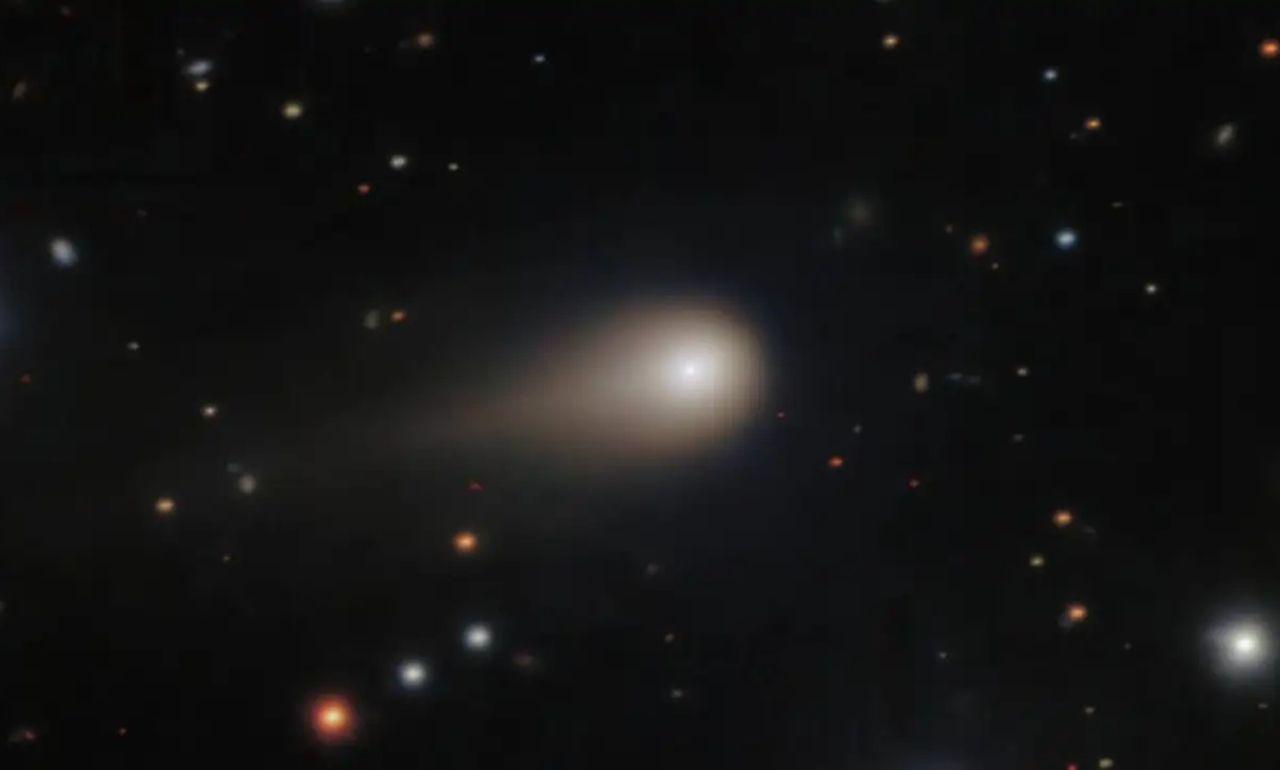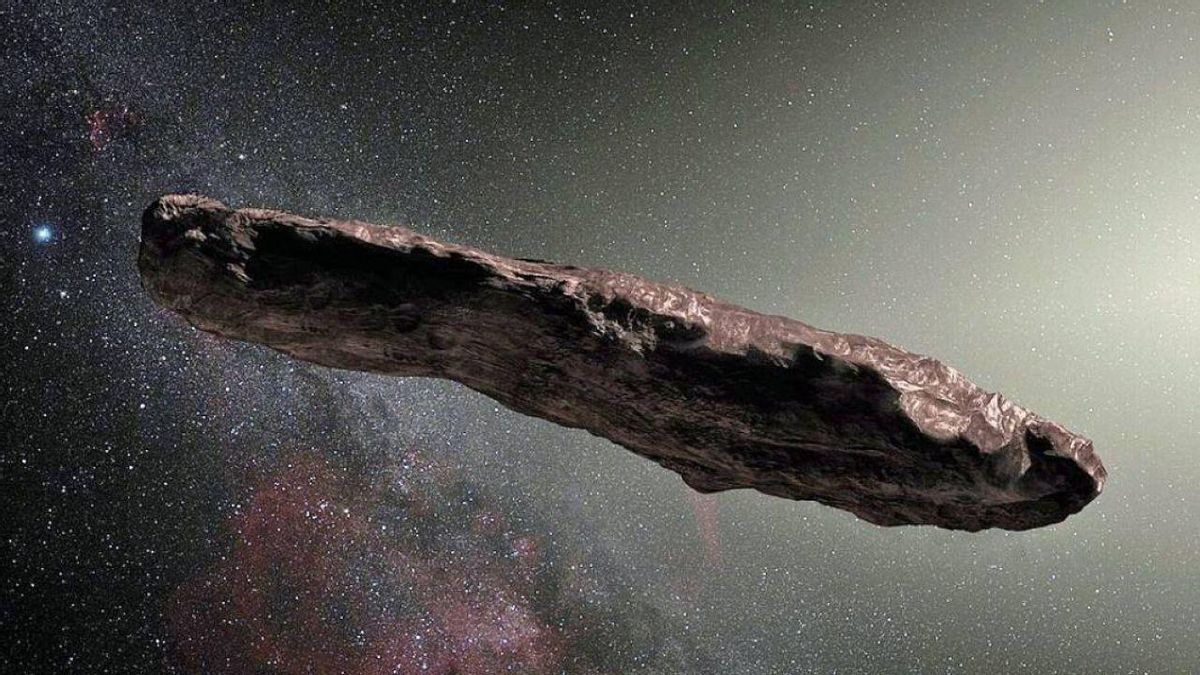- Perihelion of 3I/ATLAS on October 29 at 1,36 AU (203 million km) from the Sun
- Key tracking from Europe: VLT, SOHO/LASCO and ESA's JUICE mission
- Unusual chemical signature: iron-free nickel vapor detected at a great distance
- Upcoming dates: Venus (November 3), Earth (December 19) and Jupiter (March 16, 2026)

As it approaches perihelion, 3I/ATLAS It has become the focus of astronomy because it is only the third confirmed interstellar object to pass through the solar neighborhood. Its observation geometry from Earth near the key date is not the best, but Coordinated monitoring from Europe and other observatories is allowing its behavior to be traced. with remarkable detail.
Far from sensational headlines, the available data points to a ordinary-looking comet with unique features, whose hyperbolic trajectory and orbital parameters betray it as visitor from outside the System SolarThe scientific community takes advantage of the opportunity to study its chemistry and dynamics, while extraordinary hypotheses are put to the test of evidence.
What is 3I/ATLAS and why does it matter?

Detected on July 2, 2025 by the ATLAS network, its eccentricity greater than 6 and its relative speed of ~58 km/s Regarding the Sun, they confirmed its interstellar origin. It features a typical comma and dust tailand in recent weeks has shown an “anti-tail” (or apparent tail towards the Sun) explainable by perspective effects and particle dynamics, a phenomenon known in comets of the Solar System.
In addition to its orbital interest, 3I/ATLAS offers a unique window into primordial materials formed outside our environment. Studying them could reveal if the building blocks of planetary systems are they uniform across the galaxy or do they vary depending on the stellar environment of origin?
Key dates and distances of the passage through the Solar System
Perihelion occurs on October 29, around 11:47 UT, at 1,36 AU (203 million km) from the SunOn that date, the solar elongation is very unfavorable and the object is practically in opposition to the Earth, so that Direct observation from our planet is complicated.
On November 3, 3I/ATLAS will move to about 97 million km from VenusDuring that same week, its geometry will be favorable for the European JUICE mission, en route to Jupiter, to perform remote observations without the sunlight in between.
Its closest approach to Earth is scheduled for December 19, at an approximate distance of 267 million km (purely gravitational trajectory). Although it will not be a bright object visible to the naked eye, it will tend to be visible to large amateur telescopes at magnitudes around +11 as re-emerges in the morning sky.
Already in 2026, on March 16, 3I/ATLAS will approach 54 million km from JupiterIn that environment, the Juno probe could attempt imaging or radio checks in search of emissions, always within the capabilities of the mission and the established scientific priorities.
Who is watching: the role of Europe and the major observatories

Europe is playing a prominent role. Very Large Telescope (VLT) in ChileThe telescope, operated by ESO, has been monitoring the comet's spectral evolution with instruments such as X-shooter and UVES, capturing its chemical "awakening" as it approaches the Sun. Telescopes in the Canary Islands have also contributed, documenting the changing morphology of the tail.
In space, the LASCO coronagraph aboard SOHO (joint ESA/NASA mission) It has recorded the comet near perihelion despite its faint brightness. Furthermore, images of CCOR-1 from the GOES-19 satellite have shown its faint trail when it was on the far side of the Sun, an example of how Heliospheric instruments can support comet hunting under difficult observation conditions.
Unique chemistry: nickel vapor and a CO2-rich coma
One of the most striking results is the nickel vapor detection in the coma of 3I/ATLAS at a large heliocentric distance (≈3,9 AU), without concomitant iron signals above the instrumental limits. This unusual pattern suggests that nickel could be released from compounds that They break at low temperatures under solar radiation, instead of coming from the direct sublimation of the metal.
As it approached, it was also detected cyanogen (CN) emissiontypical of comets, and observations with the James Webb Space Telescope point to a coma relatively rich in CO2 in relation to water, in addition to particulate water ice and carbon monoxide. All of this paints a complex chemical picture that helps to compare 3I/ATLAS with 2I/Borisov and solar comets well studied.
Opportunities for measuring the ion tail from ships en route
A recent study proposes leveraging the trajectory of Hera (ESA) and from Europa Clipper to try to detect ions from the tail of 3I/ATLAS during very specific windowsBetween October 25 and November 1 for Hera, and from October 30 to November 6 for Europa Clipper. Even after passing to millions of kilometers from the central axis From the tail, the scattering of particles from active comets could allow useful measurements.
There are limitations: Hera does not carry instruments designed to capture ions or the "draped" magnetic structure typical of a coma, whereas Europa Clipper does have a magnetometer and plasma pack suitable for an opportunistic attemptHowever, coordination is complex and dependent on the limited room for maneuver available.
Extraordinary hypotheses and the acid test of perihelion

As it happened with 1I/'OumuamuaThere is no shortage of exotic interpretations. It has been suggested that 3I/ATLAS could be an artificial object or a “Trojan horse”or if the anti-tail would be a deliberate “braking”For now, photometric, spectroscopic, and morphological measurements fit best with a natural comet that expels dust and gas under particular lighting and perspective conditions.
The perihelion functions as decisive trialIf the nucleus is brittle, heating could fragment it and exacerbate its coma; if not, We will see sustained activity within expectations.Technological signals such as non-gravity maneuvers, artificial lights, or excessive engine heat have not been reported with robust evidenceIn science, the simplest explanation is usually correct until proven otherwise by the data.
With this set of campaigns from Europe and the rest of the world, and with clear milestones—Venus on November 3, closest approach to Earth on December 19 and close approach to Jupiter on March 16, 2026—, 3I/ATLAS offers a unique opportunity to test models of interstellar comets, improve heliospheric observation techniques and compare its chemistry with that of our Solar System without taking anything for granted that is not supported by the data.
I am a technology enthusiast who has turned his "geek" interests into a profession. I have spent more than 10 years of my life using cutting-edge technology and tinkering with all kinds of programs out of pure curiosity. Now I have specialized in computer technology and video games. This is because for more than 5 years I have been writing for various websites on technology and video games, creating articles that seek to give you the information you need in a language that is understandable to everyone.
If you have any questions, my knowledge ranges from everything related to the Windows operating system as well as Android for mobile phones. And my commitment is to you, I am always willing to spend a few minutes and help you resolve any questions you may have in this internet world.
